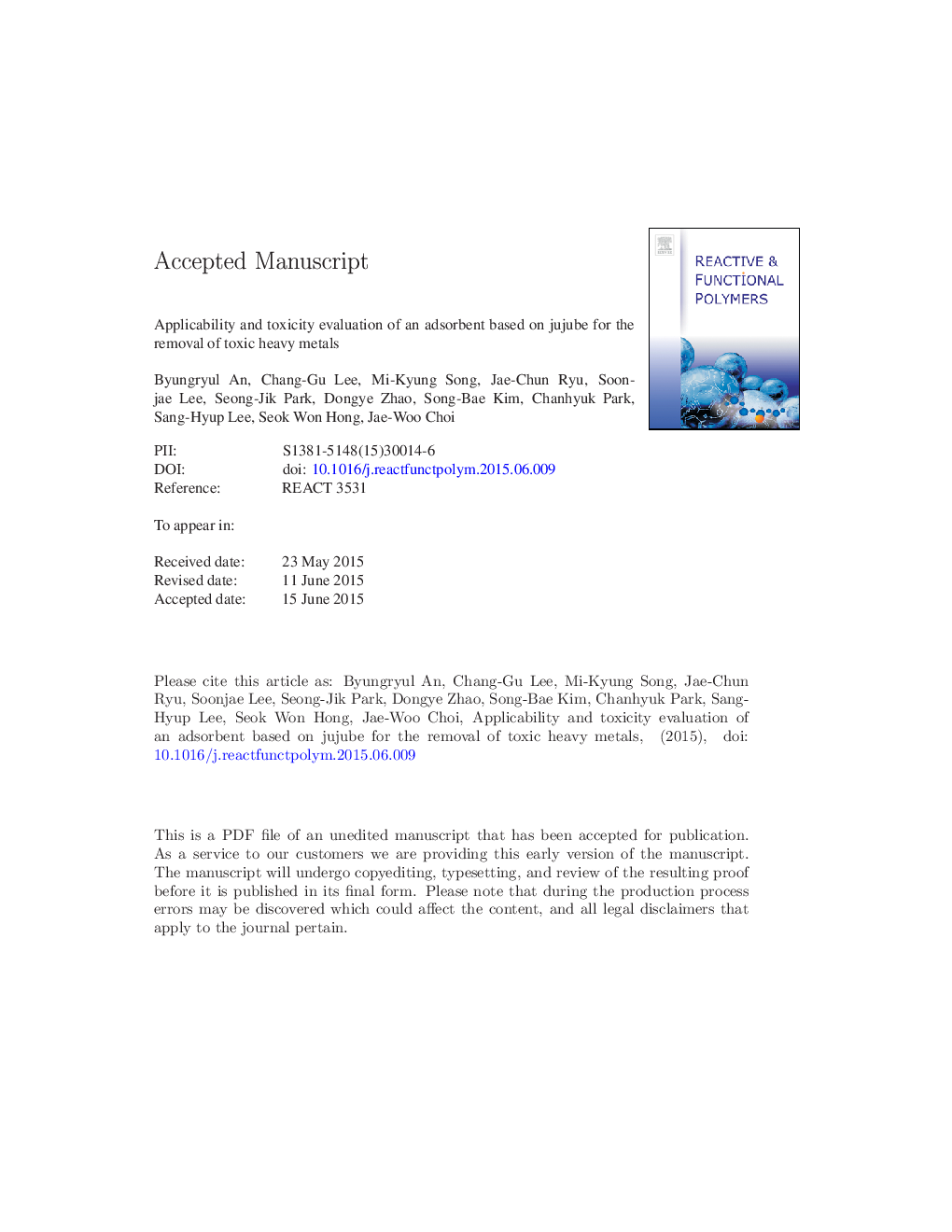| Article ID | Journal | Published Year | Pages | File Type |
|---|---|---|---|---|
| 5209740 | Reactive and Functional Polymers | 2015 | 39 Pages |
Abstract
The removal of heavy metals from industrial wastewater is important, owing to its eco-toxicity in aqueous environment. In this study, the mechanism and efficiency of the removal of toxic heavy metals by an eco-friendly adsorbent was investigated. Various types of adsorbents made from jujube were synthesized by varying the drying temperature of gel-type beads and elution method for jujube constituents. The maximum adsorption capacity for lead and copper ions was determined using the Langmuir isotherm model, with DJB-A-S-F (freeze-dried jujube bead made from a solution of squeezed autoclaved jujube) having the highest values at 60.44Â mg/g (lead) and 20.33Â mg/g (copper). In addition, the characteristics of the various adsorbents were determined by the Brunauer-Emmett-Teller (BET) method, scanning electron microscopy (SEM), and energy dispersive X-ray analysis (EDX). Gas chromatography-mass spectrometry (GC-MS) was used to identify the constituents of DJB-A-S-F before and after adsorption of heavy metals (Pb- and Cu-DJB-A-S-F). Furthermore, in vitro cytotoxicity assay was performed to investigate whether the binding of heavy metals to DJB-A-S-F increases cellular toxicity. As a result, no differences in cell viability between DJB-A-S-F and the ones coupled to heavy metals were observed, indicating that the developed adsorbents are non-cytotoxic with good compatibility. Thus, DJB-A-S-F is a promising adsorbent for the removal of toxic heavy metal cations from wastewater.
Related Topics
Physical Sciences and Engineering
Chemistry
Organic Chemistry
Authors
Byungryul An, Chang-Gu Lee, Mi-Kyung Song, Jae-Chun Ryu, Soonjae Lee, Seong-Jik Park, Dongye Zhao, Song-Bae Kim, Chanhyuk Park, Sang-Hyup Lee, Seok Won Hong, Jae-Woo Choi,
